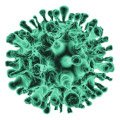In a world where food options are abundant and often overwhelming, it can be difficult to know what to eat to maintain optimal health. Yet, the key to better health often lies in something simple: a balanced diet. A balanced diet involves eating a variety of foods in the right proportions to maintain overall well-being and support the body’s numerous functions. When done right, it can improve energy levels, support immune function, promote healthy weight management, and reduce the risk of chronic diseases.
However, understanding how to create a balanced diet can be challenging with all the conflicting dietary advice out there. The good news is that building a healthy eating plan doesn’t have to be complicated. In this guide, we’ll explore the essential components of a balanced diet, tips for creating one, and practical advice to help you incorporate healthy eating habits into your daily routine.
1. What is a Balanced Diet?
Before diving into how to create a balanced diet, it’s important to understand what “balanced” means in the context of food. A balanced diet provides all the nutrients your body needs to function properly. This includes macronutrients (such as carbohydrates, proteins, and fats) and micronutrients (like vitamins and minerals), along with adequate hydration.
1.1. Macronutrients: The Building Blocks of Your Diet
- Carbohydrates: Carbs are your body’s primary source of energy. They are found in foods like bread, pasta, rice, fruits, vegetables, and legumes. Not all carbohydrates are created equal, however. Simple carbs, like those in sugary snacks, can spike blood sugar levels and lead to energy crashes. On the other hand, complex carbs from whole grains, vegetables, and legumes provide sustained energy and are rich in fiber, which helps with digestion.
- Proteins: Protein is essential for building and repairing tissues, making enzymes and hormones, and supporting immune function. Sources of protein include lean meats, poultry, fish, eggs, dairy, beans, nuts, and legumes. It’s important to consume high-quality protein from a variety of sources to ensure you’re getting all the essential amino acids your body needs.
- Fats: While fats have earned a bad reputation in the past, they are actually essential for the body’s health. Healthy fats support brain function, energy production, and the absorption of fat-soluble vitamins (A, D, E, and K). Sources of healthy fats include olive oil, avocado, nuts, seeds, and fatty fish like salmon. It’s important to limit saturated fats (found in processed meats and certain dairy products) and avoid trans fats (found in many processed foods).
1.2. Micronutrients: Vitamins and Minerals
Micronutrients are vitamins and minerals that our bodies need in smaller amounts but are equally important for health. They help regulate metabolism, support immune function, protect cells from damage, and contribute to overall growth and development.
- Vitamins: Essential vitamins like Vitamin C, Vitamin D, Vitamin A, and B-vitamins (such as B12 and folate) are crucial for various bodily functions, from supporting immunity to helping with energy production.
- Minerals: Important minerals include calcium (for strong bones and teeth), iron (for oxygen transport in the blood), magnesium (for muscle and nerve function), and potassium (to regulate blood pressure).
1.3. Water: The Often Overlooked Nutrient
Water is not technically a nutrient, but it is just as vital for maintaining a balanced diet. It supports digestion, regulates body temperature, aids in the removal of waste, and ensures that nutrients are transported throughout the body. Aim to drink enough water throughout the day to stay hydrated—usually around 8 cups (2 liters), but individual needs vary depending on activity levels and climate.
2. The Components of a Balanced Diet
Now that we know what a balanced diet consists of, let’s explore how to build one. A well-rounded, nutritious diet should include foods from each of the following five food groups:
2.1. Fruits and Vegetables
Fruits and vegetables should make up a significant portion of your diet, ideally filling half of your plate at each meal. These foods are rich in vitamins, minerals, antioxidants, and fiber, which are crucial for maintaining good health. The fiber content helps with digestion and can help prevent chronic conditions like heart disease and type 2 diabetes.
- Aim for variety: Different fruits and vegetables contain different nutrients, so eating a wide variety ensures you’re getting a broad spectrum of health benefits.
- Color counts: The more colorful your plate, the better. For example, dark leafy greens like spinach and kale are high in iron and calcium, while orange vegetables like carrots and sweet potatoes are rich in Vitamin A.
2.2. Whole Grains
Whole grains like brown rice, quinoa, oats, and whole-wheat products are excellent sources of complex carbohydrates and fiber. Unlike refined grains, which have been stripped of their nutrients, whole grains contain all three parts of the grain—the bran, germ, and endosperm—providing more vitamins, minerals, and fiber.
- Choose whole grains over refined grains: Opt for whole-grain bread, pasta, and cereals over their white counterparts to boost fiber intake and support heart health.
- Incorporate legumes: Beans, lentils, and peas are great sources of fiber and plant-based protein, and they can also count as whole grains in your diet.
2.3. Lean Proteins
Protein is a vital part of a balanced diet, and it is essential for maintaining muscle mass, supporting immune function, and keeping your body functioning at its best. The key is to focus on lean protein sources, which provide the benefits of protein without excess saturated fat.
- Animal-based sources: Chicken, turkey, lean cuts of beef or pork, eggs, and dairy products are all excellent sources of protein.
- Plant-based sources: Tofu, tempeh, legumes, and quinoa are great options for vegetarians and vegans to meet their protein needs.
2.4. Healthy Fats
Healthy fats are necessary for brain function, heart health, and the absorption of certain vitamins. Including moderate amounts of healthy fats in your diet can help keep you satisfied, promote heart health, and support overall well-being.
- Sources of healthy fats: Avocados, nuts, seeds, olive oil, and fatty fish like salmon, mackerel, and sardines are great options. These foods provide monounsaturated and polyunsaturated fats, which are heart-healthy fats that can help reduce the risk of cardiovascular disease.
- Limit unhealthy fats: Saturated fats (found in fatty cuts of meat and full-fat dairy) and trans fats (found in many processed foods) should be consumed in moderation.
2.5. Dairy or Dairy Alternatives
Dairy products, such as milk, yogurt, and cheese, are important sources of calcium and Vitamin D, which are essential for bone health. However, if you are lactose intolerant or prefer plant-based options, there are plenty of dairy-free alternatives available, such as almond milk, soy yogurt, and fortified plant-based cheeses.
- Look for fortified options: If you’re choosing dairy alternatives, ensure that they are fortified with calcium and Vitamin D to support bone health.
- Choose low-fat options: If possible, opt for low-fat or fat-free dairy products to reduce saturated fat intake.
3. How to Create a Balanced Meal Plan
Creating a balanced diet isn’t just about choosing the right foods; it’s also about planning your meals so that you’re eating nutrient-dense foods throughout the day. Here are some tips for creating a balanced meal plan:
3.1. Plan for Variety
When planning your meals, include a variety of foods from each food group to ensure that you’re getting a wide range of nutrients. For example, one day you might have grilled chicken with quinoa and roasted vegetables, and the next day, you might have a lentil stew with a side of leafy greens and a whole-grain roll.
3.2. Portion Control
Even healthy foods can contribute to weight gain if eaten in excess. Pay attention to portion sizes, and listen to your body’s hunger and fullness cues. The goal is to eat enough to nourish your body, but not to overeat.
- Use smaller plates: This simple trick can help you avoid overeating by encouraging you to serve yourself smaller portions.
- Be mindful of snacks: Keep portion sizes in check when snacking between meals by pre-portioning your snacks into smaller containers or bags.
3.3. Incorporate Fiber
Fiber is essential for good digestion, weight management, and heart health. Ensure that each meal contains a source of fiber, such as vegetables, fruits, whole grains, or legumes. Fiber-rich foods help you feel full longer and can stabilize blood sugar levels.
3.4. Stay Hydrated
Water should be an essential part of your balanced diet. Aim to drink water throughout the day, especially before, during, and after meals. Avoid sugary drinks and sodas, which can add empty calories to your diet and contribute to weight gain and chronic disease.
4. Maintaining a Balanced Diet Long-Term
The key to successfully maintaining a balanced diet is consistency. Here are some tips for sticking to your balanced diet over time:
4.1. Make Gradual Changes
If you’re used to eating an unhealthy diet, making drastic changes overnight can be overwhelming. Instead, focus on making gradual changes, such as swapping out refined grains for whole grains or replacing sugary snacks with fruit.
4.2. Keep Healthy Snacks on Hand
Stock your kitchen with nutritious snacks like cut-up vegetables, nuts, or yogurt. Having these options available can help you resist the temptation to reach for unhealthy choices when hunger strikes.
4.3. Be Flexible
While it’s important to follow a balanced diet, it’s also okay to indulge every once in a while. A balanced approach to eating includes flexibility, so don’t stress over the occasional treat. The key is balance, not perfection.
Conclusion: A Balanced Diet for Better Health
Creating a balanced diet is an essential step toward improving your overall health and well-being. By incorporating a variety of nutrient-dense foods from all food groups, focusing on portion control, and maintaining hydration, you can support your body’s functions, improve your energy levels, and reduce the risk of chronic diseases. Remember, a balanced diet is not about deprivation—it’s about nourishing your body with the right foods to promote long-term health and happiness.










